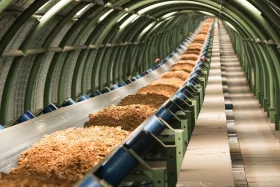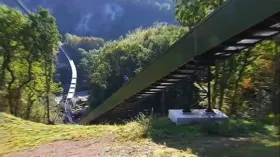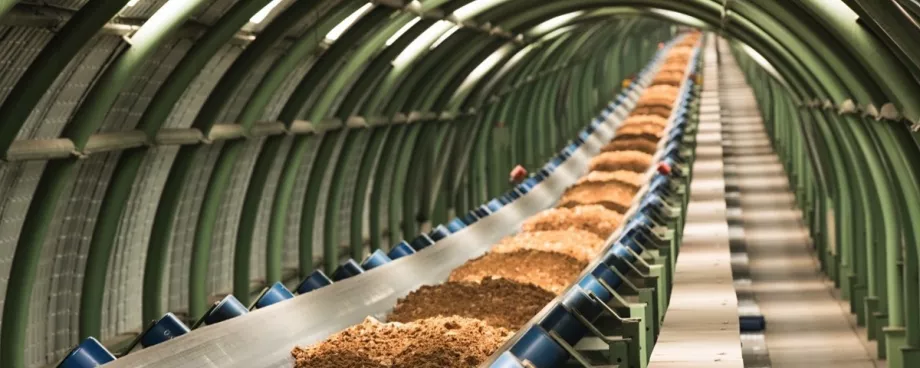
An essential feature of the technology is that it enables horizontal and vertical curves. Angles of inclination of up to 15 degrees are possible, depending on the characteristics of the material to be transported and the topography, with lengths greater than twelve kilometres.
Due to their ability to navigate curves, considerably fewer and in some cases no transfer towers are required. This results in substantial cost savings for the customer and the system continuously transports the material even over challenging ascending and descending sections, rivers or street crossings.
Using BEUMER calculation programs, the experts precisely calculate the static and dynamic tractive forces of the belt during the system development phase. This is the prerequisite for the safe dimensioning of the curves.

For trucks, more cost factors must be taken into account that are not as easy to estimate as the number of routes: control measures against dust and rain drainage, for example. These variables are eliminated completely in case of closed Pipe Conveyors. “If circa 1,000,000 tons of bulk material are moved per year, then the gross differential value between trucks and a conveyor, using the above mentioned costs of the material that needs to be conveyed, is at 2.8 million euro,” calculates Munson. That’s quite a number, in his opinion. The conveying system pays for itself after only a few years.
Ecological and Economical
The electric drives and low-energy belts have a positive effect on the operational costs of the belt conveying systems. They are also better for the environment compared to the truck drives. Therefore, especially in these times of climate change and increasing greenhouse gas emissions they are considered a more sustainable option. The motors used for these systems are usually adjustable which permits the loads to be optimally distributed on the drive units under various operating conditions. If the belt conveying system conveys downhill, the system works in regenerative operation. The generated electric energy is fed to the mains by a regenerative feedback unit. This way the owners can further reduce the operational costs of the entire system.

“Depending on the project, belt conveying systems require up to 90 percent less primary energy than comparable truck transports,” says the sales manager, referring to a concrete project implemented for the Chinese cement manufacturer Sichuan Yadong Cement. Trucks operated with diesel fuel required a specific primary energy of 11.4 kwh for each ton of transported material at their site. The belt conveying system which was built later on required on the contrary only 1.44 kwh. If, as in this case, 7.5 million tons of raw material are transported annually, the user can save a total of 74 million kwh per year with the belt conveyor. This corresponds to an energy consumption of more than 20,000 single-family houses. Solely by saving diesel fuel, the operational costs of the company are reduced by more than 5.5 million Euro per year.
So does the investment in a belt conveying system pay off? “More often than people realise,” explains Munson. “In the end, the operator needs to consider the total costs per ton over time when evaluating both transport options.” The fact is: The operational costs for a belt conveyor are considerably lower than for a truck. The decisive factor is how much material is transported during the project term, then it can pay for itself quickly. Not to mention the BEUMER conveying systems are more environmentally friendly from the beginning.
■











